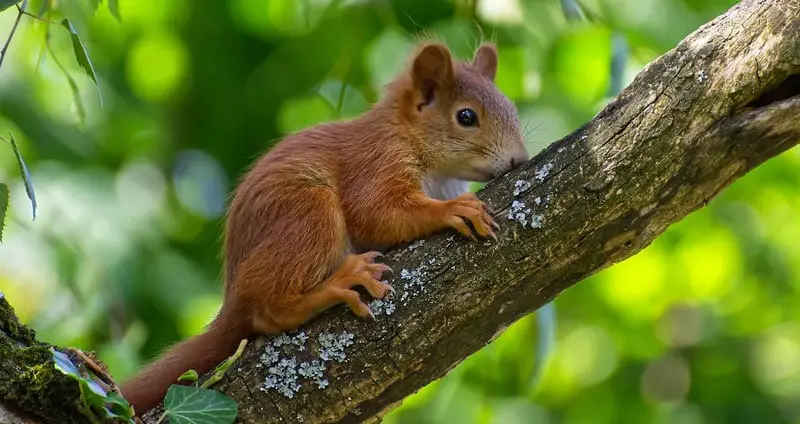Squirrels are absolutely everywhere. Whether you love them or hate them, it’s likely that you see them as much or more than most other animals. Despite this, most people don’t know much about squirrels.
If you were to ask several people how long they think a squirrel lives, you’ll likely get a variety of answers ranging from a few months to many years. Surprisingly, they’re all partially correct!
Whether you’re wondering how long your pet squirrel will live for or how long a squirrel will wreak havoc on your property, read on to better understand the lifespan of a squirrel.
Table of Contents
How Long Do Squirrels Live?
The lifespan of a squirrel can vary greatly. Most wild squirrels don’t live beyond 1 year, but they can potentially live for more than 10 years. Captive squirrels, however, regularly live for 15 years, sometimes reaching around 25!
There are a myriad of factors that determine how long a squirrel lives for. While premature deaths absolutely lower the average lifespan, the species and geographic location of the squirrel play huge parts in their lifespan.
Therefore, with the amount of variation that exists, a single accurate age range is difficult to construct beyond “1 to 25 years”.
Examples of Different Squirrel Lifespans
To better understand how long squirrels live for, it helps to see the individual lifespan of multiple different types of squirrels.
Below we’ve highlighted 7 of some of the most common squirrel species — species that you’ll likely encounter or already have plenty of experience with.
American Red Squirrel
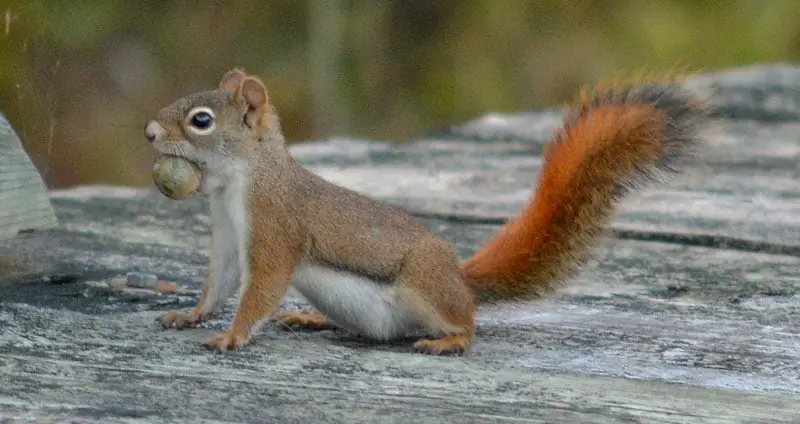
Also known as the Pine Squirrel, North American Red Squirrel, and Chickaree, the American Red Squirrel is widely distributed across North America.
This species of squirrel experiences very high levels of mortality early on, with only 22% surviving past one year of age.
Interestingly, males have very slightly longer lifespans than females — a trend that’s usually reversed in most animals, let alone squirrels.
Wild Lifespan: 1-3 years
Domestic Lifespan: ~8 years
Fox Squirrel

Fox Squirrels are the largest squirrels in North America, and are frequently confused for several other species that share a similar appearance and coloration.
This species is most abundant in open forests with little vegetation underneath, but they’re notably tolerant of humans and gladly live in crowded urban areas.
Wild Lifespan: 8 – 13 years
Domestic Lifespan: ~18 years
Red Squirrel

This curious-looking squirrel is a species that’s common throughout Eurasia. Over the years, their population has declined due to the introduction of Grey Squirrels into their natural habitat.
Due to the harshness of the environments that they inhabit, juvenile mortality is extreme. 75-85% of juveniles die within their first winter, and each subsequent winter has a 50% mortality rate.
Wild Lifespan: 3-7 years
Domestic Lifespan: ~10 years
Western Gray Squirrel
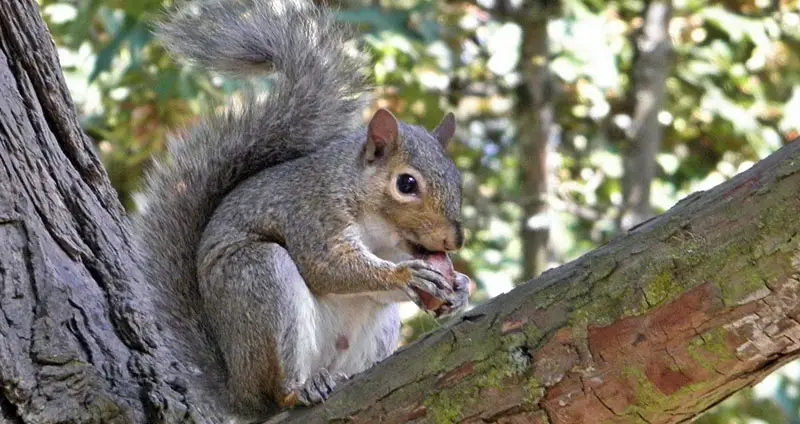
This species of squirrel is very common along the United States’ west coast and Mexico. They’re fairly standard-looking and actually encompass three sub-species of squirrel.
Wild Lifespan: 7-8 years
Domestic Lifespan: ~15 years
Grey Squirrel
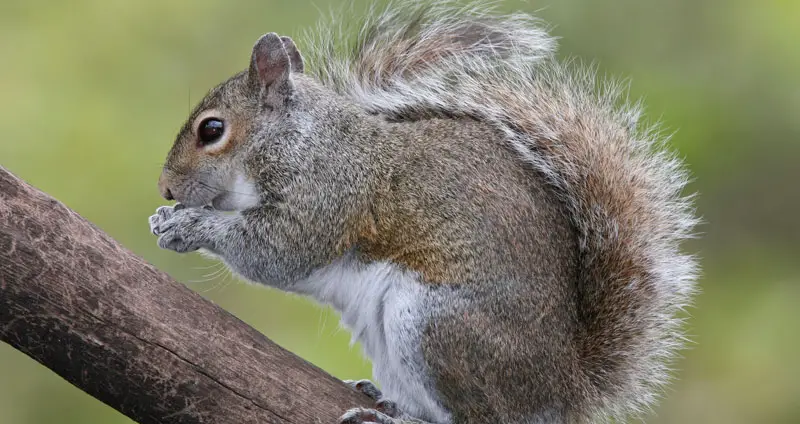
Grey Squirrels, also known as Eastern Gray Squirrels, are some of the most prominent squirrels in North America. In fact, this is the species that most people think of when they picture a squirrel.
It’s present throughout the easter and midwestern United States and in numerous Canadian regions. In some places of the world, this squirrel is considered an invasive species.
At birth, their life expectancy is only 1-2 years, but that increases once they mature.
Wild Lifespan: 6-12 years
Domestic Lifespan: ~20 years
Southern Flying Squirrel

This is one of three flying squirrel species found in North America and is widely distributed throughout the eastern half of the country, as well as parts of Canada and Mexico.
These small squirrels have been observed living very social lives, often times gliding and sleeping in groups.
Wild Lifespan: 2-3 years
Domestic Lifespan: ~5 years
Black Squirrel
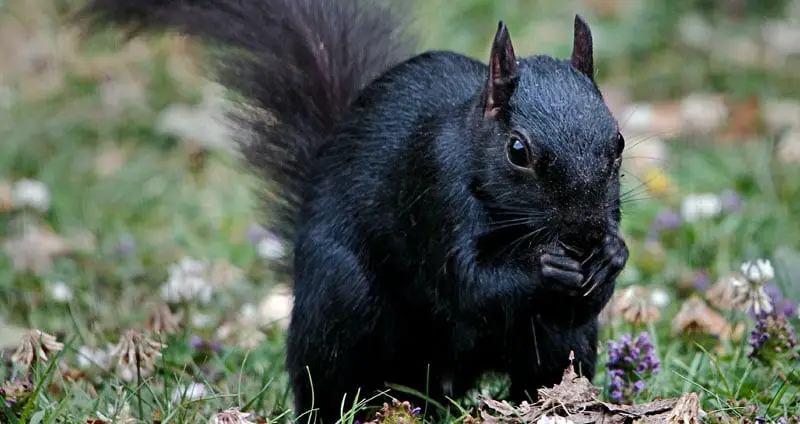
Black squirrels aren’t actually a unique squirrel species. Instead, they’re either Grey Squirrels or Fox Squirrels with increased levels of melanin.
There’s no differences in this squirrel besides its coloration, so its lifespan will be that of either a Grey Squirrel or a Fox Squirrel.
Wild Lifespan: 6-13 years
Domestic Lifespan: ~20 years
Wild vs. Captive Squirrel Lifespans
As you can see, there is quite a large difference in the lifespans between wild and captive squirrels. Wild squirrels tend to have about half of the lifespan of a captive squirrel, and that’s if they manage to outlive their childhood.
A large majority of squirrels never actually make it out of infancy. So, realistically, a wild squirrel is only expected to live for about a year, maybe less.
Why is it that wild squirrels have their lives cut so short? Many of them are great scavengers and act smart, so why do they have such a hard time staying alive for long?
- Baby squirrels are frail – When squirrels are just born, they’re extremely frail and helpless. They’re hairless and blind, and it takes them about 3 weeks to even open their eyes. Mother squirrels do care for their babies, but they can only do so much while they also try and gather food, provide shelter, and keep themselves alive. These vulnerable babies are easily killed by predators, bad weather, and the harsh life that wild squirrels endure.
- Predators – Even when a squirrel grows out of its frail baby stage and is able to fend for itself, it’s still the target of a wide variety of predators. Some of these predators include hawks, weasels, raccoons, foxes, cats, snakes, owls, and dogs. Captive squirrels obviously don’t need to worry about any of those.
- Humans – Humans are easily some of the biggest killers of squirrels, both on purpose and accidentally. Squirrels are commonly killed for their pelts, but they can also be killed for meat. In some cases, squirrels are hunted in an effort to control their infestation. Accidental kills happen, too, largely because of cars. Squirrels understandably can’t comprehend cars, so they’re frequently run over.
Captive squirrels are kept in environments where the above three points aren’t an issue, so they’re able to live out their full lives with ease.
A complete diet, comfortable housing, and a low-stress environment all contribute towards helping the squirrel live longer than its wild counterpart.

